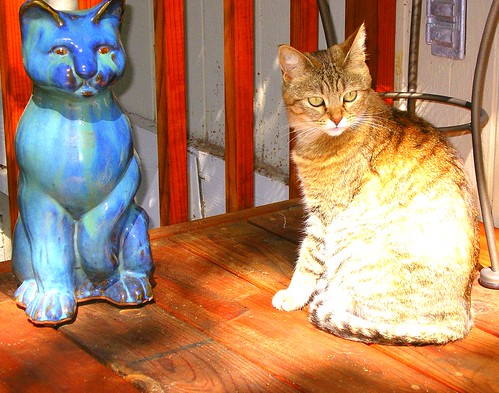Reading through the essays on the concept of Library 2.0, a few common themes become clear. First, the presumption is that libraries need to change in order to serve the populations to which they are responsible. Secondly, it seems to be assumed that we are in an either/or situation; either traditional service or technologically-enhanced service can be offered, not both. I find that I actually agree with both of these in certain contexts, but overall disagree. While some of the notions of a 2.0 Librarian seem reasonable and useful to me, I think there is a disconnect between our projections of future possibilities and actual patron needs in the present moment.
The idea of enabling techno-savvy patrons to maximize their information access is wonderful, and I’m tremendously excited to see it emerging and taking on steam. As an enhancement of previous services, I believe it has potential to make libraries invaluable as a resource for self-motivated early adopters of innovation. As a replacement for traditional services, at least in the present day, I think it is extremely problematic.
As huge changes rock our country, our economy, our climate, and our levels of technological innovation, Americans are bombarded by the swift and sometimes terrifying alteration of their expectations at a rate that many will find difficult to integrate. Meanwhile, our demographic is skewing, not to the young and technologically-skilled, but to the retirement age. Libraries are in a unique position to offer the comfort of consistency and assistance in a maelstrom of information overload.
I myself love technological innovation, and I tend to find it thrilling and see possibilities in change. But the patrons with whom I speak routinely seem to be a varied population, with strong resistance to change in a quite large proportion of them. It is true that over time, new models will become more commonly accepted and the young users, aging, will have different expectations than our current ones do. We aren’t there yet, however, and it will take some time (thank goodness).
Given such a current situation, I tend to think we will do better offering variation and possibility, learning to conform to changes while maintaining a solid, reliable core of predictable services and options. None of us want to force change on a reluctant population if it’s not necessary, or deny patrons the services they currently pay taxes for us to provide for them. We do, however, need to recognize transformation of culture and advancements, and make services based on them available to those users prepared to take advantage of them.
I am eager to add to the range of services we offer to patrons of all ages and needs, and can’t wait to see things like truly comprehensive databanks of published works emerge and become publically available. Enabling the users to be interactive with the information is one of the best things to happen in the last decade, with its potential for inclusiveness. Traditional, physical libraries and printed collections have not reached the end of their usefulness, however, and I would like to get rid of the bathwater and still have the baby, new toys included. If every library looks to its population, not just for the majority but also the minority groups within it, I think we will find there are a multiplicity of needs we are uniquely placed to serve.
Library 2.0, to me, means adding to choices, enhancing possibilities, and using all the possible means we can find to make these options available to the populations we serve in a respectful and supportive manner.
Subscribe to:
Post Comments (Atom)

No comments:
Post a Comment